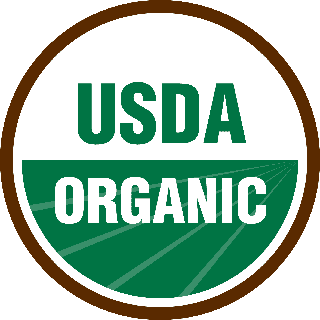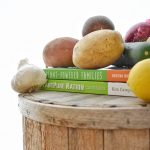Do you want to start living a more organic lifestyle by eating healthy, using chemical-free home products, and loving your body enough to treat it with only the finest and purest? It has been an ongoing journey for our family but it is becoming easier and easier. I talked about why our family chose to go down an organic road in previous posts here and here but to paraphrase, we wanted to rid our bodies of the chemicals and toxins that come with the mass produced, commercial foods, home, and personal products.

Let’s talk food shopping. Going organic doesn’t have to be hard or costly. When most people think organic they think their grocery bill will go up in epic proportions, however nowadays the word “organic” isn’t as scary a word. It has migrated from that one section in that one aisle of your food store to the mainstream shopping experience. This makes it easier than ever to include these organic products in your cart.
Here are some shopping tips to eating organic:
- Go generic – Almost all major food stores now carry a variety of certified organic products under their own name. I personally shop at Whole Foods and, in most cases, purchase their 365 organic products. They are reasonably priced and still hold the very essence of what organic is all about.
- Portion size – There are two ways to look at portioning your meats, the most costly part of going organic. You can both buy in bulk, separate and seal in freezer bags to use at a later day OR you can decide the portions you really need. Many meat counters will oversell you on the ounces per person so I would suggest cutting the portion size in half and fill the void with more veggies and whole grains.
- Frozen is your friend – When it comes to organic, freezer items are the best bargains in the food store. Stock up on your frozen veggies and fruits and as an added bonus, you can eat them on your schedule with no worries of them going bad.
- Go for legumes – As stated before your beef, fish, and poultry are the most costly calories. Try substituting these with a more vegetarian meal. Use your favorite canned or dried beans and lentils in your meals. This will not only help your wallet but it will also help your waistline and it will improve your health.
- Say no to organic junk food – Just because something says “organic” that doesn’t mean it isn’t full of calories that can pack on the pounds. At least 75% of your cart should include minimally processed foods that look as close to their natural form as possible.

- Cookbooks – Cookbooks can make or break your wallet so I suggest finding ones with MINIMAL ingredients in the list. I personally love these two books: Plant-Powered Families and The Plant Pure Nation
- Make it fun – No this may not help the wallet but it helps with the shopping experience. If you have children bring them along with you and have them pick out a few organic items they’d like to try out and get them involved with the preparation. That’s my youngest cleaning fruits and veggies at the bottom of this post.
- Take it slow – You don’t need to dump out your pantries, cabinets, and fridge of all the non-organic items because lets face it, that’s neither economical NOR environmentally conscious. Replace items such as spices, baking needs, boxed or canned goods as you run out.
Following some or all of these tips will most certainly help to keep your budget in line and, as an added bonus, your waistline will thank you too! Happy shopping!







